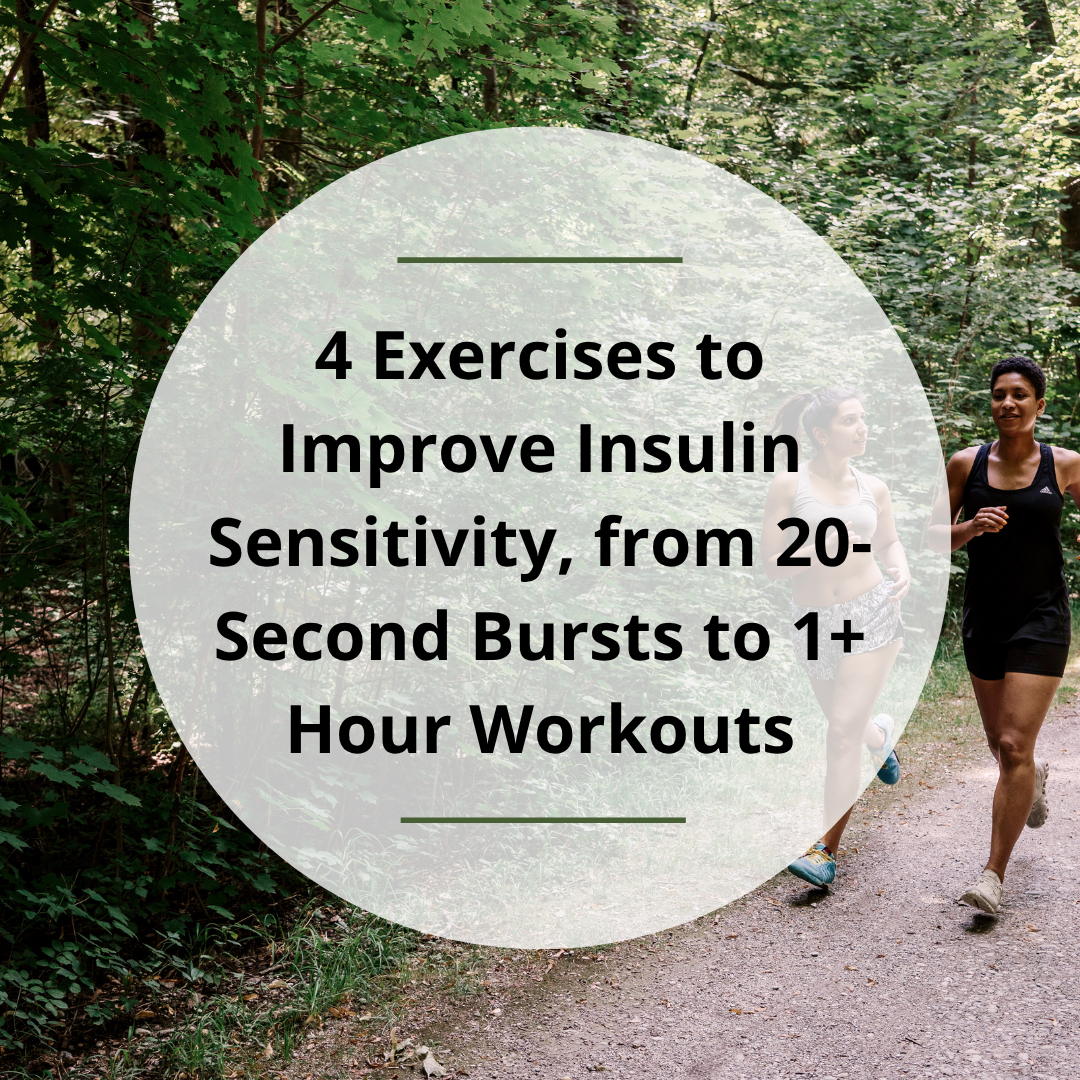
4 Exercises to Improve Insulin Sensitivity, from 20-Second Bursts to 1+ Hour Workouts
Video | Exercise Snacks | HIIT | Steady-State Cardio | Resistance Training | Maximize Your Results
Insulin sensitivity describes how well your body’s cells respond to insulin, a hormone that helps lower blood sugar levels by moving excess glucose out of your bloodstream and into your cells.
Exercise also lowers blood sugar, and it does it with little or no help from insulin, making exercise one of the most important things you can do to improve insulin sensitivity.
In this blog post, I share four scientifically supported ways to exercise for a better insulin response, and it doesn’t matter if you are short on time.
Exercises to Improve Insulin Sensitivity – At-A-Glance
- Exercise snacks are short bouts (~30 sec) of vigorous exercise. Performing them throughout the day has been shown to lower post-meal blood sugar and insulin levels.
- HIIT, or high-intensity interval training, is a short but intense exercise session (~20 min) that continually switches between exercise and active rest. It can improve insulin sensitivity after each session.
- Steady-state cardio requires less intensity but more time than HIIT (30-60 min). It produces similar improvements in insulin sensitivity.
- Resistance training encourages muscle growth. Since more muscle mass is associated with greater insulin sensitivity, regular resistance training is valuable to add to your week.
4 Exercises to Improve Insulin Sensitivity, from 20-Second Bursts to 1+ Hour Workouts [Video]
In this video, you’ll learn…
- Why it’s important to improve your insulin sensitivity.
- Four excersise that will help you achieve your goals.
- How to maximize your results.
Exercise Snacks
A lack of time is one of the main barriers when it comes to sticking with regular exercise. But do you have 30 seconds to spare?
Exercise snacks are short bouts of vigorous exercise performed throughout the day.
The concept of exercise snacks is still new, but early research shows that briskly climbing stairs for about 30 seconds every hour during an 8-hour day lowers post-meal insulin levels in overweight individuals (1).
Similar results were seen in a study where insulin-resistant participants engaged in six 1-minute bouts of uphill walking 30 minutes before breakfast, lunch, and dinner. These pre-meal exercise snacks reduced post-meal blood sugar spikes, with benefits persisting for up to 24 hours (2).
Exercise snacks fit within the structure of your day with no need to go to the gym or carve out a significant period of leisure time for exercise.
You can choose from any form of physical activity that boosts your breathing and heart rate, and you can easily incorporate them into your daily routine.
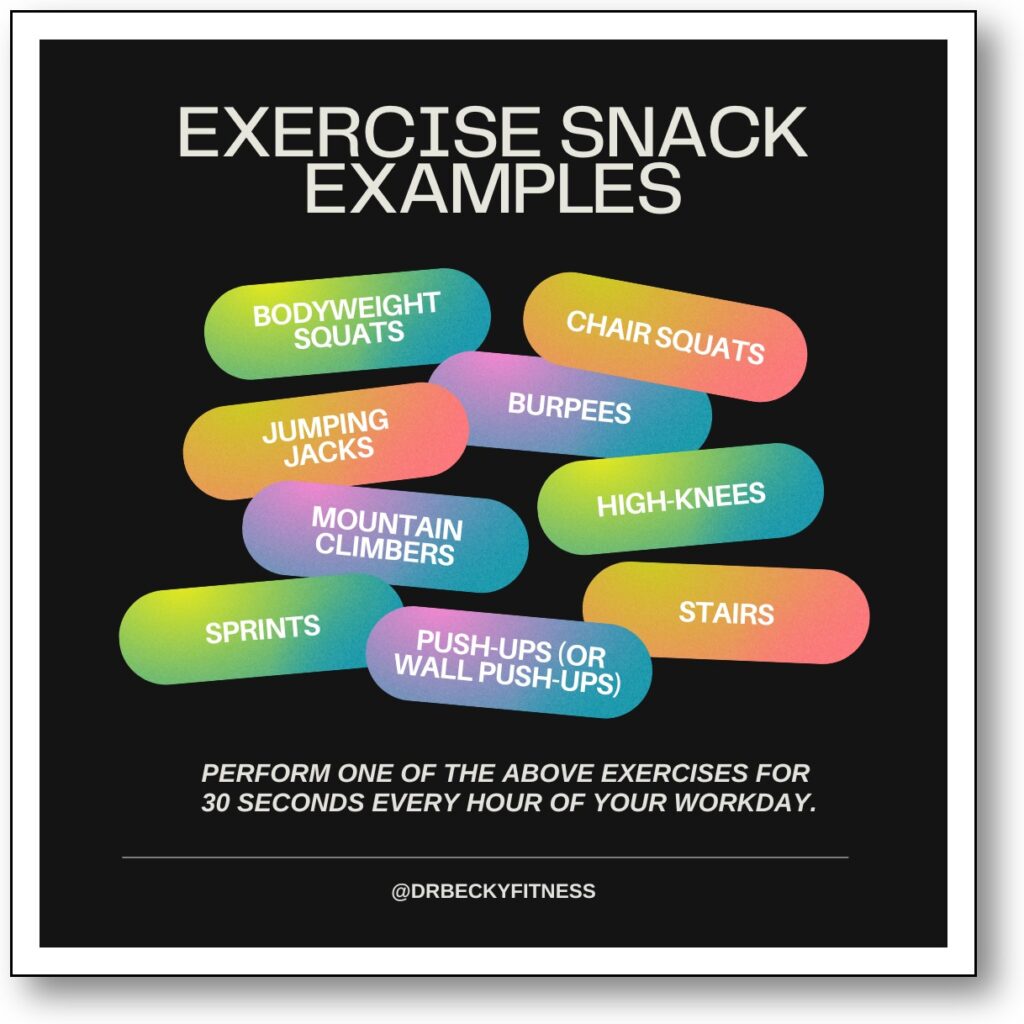
For instance, you can get up from your computer and do 30 seconds worth of bodyweight squats or stair climbing to satisfy your “snacking” requirement. If you are a new parent, 30 seconds of lunges holding your baby will give you the blood sugar stabilizing benefit you’re after.
HIIT Workouts
HIIT, or high-intensity interval training, is similar to exercise snacks in that it involves periods of exercise separated by periods of rest. However, whereas exercise snacks are spread throughout the day, HIIT is compressed into an intense 20-minute workout that has you continually switch back and forth between exercise and active rest.
Many studies demonstrate that HIIT improves insulin sensitivity. One 12-week study showed that overweight participants had improved insulin sensitivity after each session of high-intensity exercise. Participants performed 4 HIIT sessions/week. Each session involved 10 periods of intense exercise lasting 1 minute, interspersed with 1-minute active recovery periods (3).
HIIT is popular because it provides a host of benefits in a short timeframe. Also, because the workouts are based on perceived intensity, the exercises can grow with you as your fitness level grows.
There are multiple ways to perform a HIIT workout. Most people like to use a form of cardio, such as running or brisk walking, either outdoors on a treadmill or cycling on a bike or stationary bike.
For example, you can begin your workout by walking on a treadmill for three minutes to warm up. Then, perform six rounds of activity alternating between 2-minute periods of running and 30 seconds of walking. Conclude your workout with a 2-minute cooldown, and you’re done.
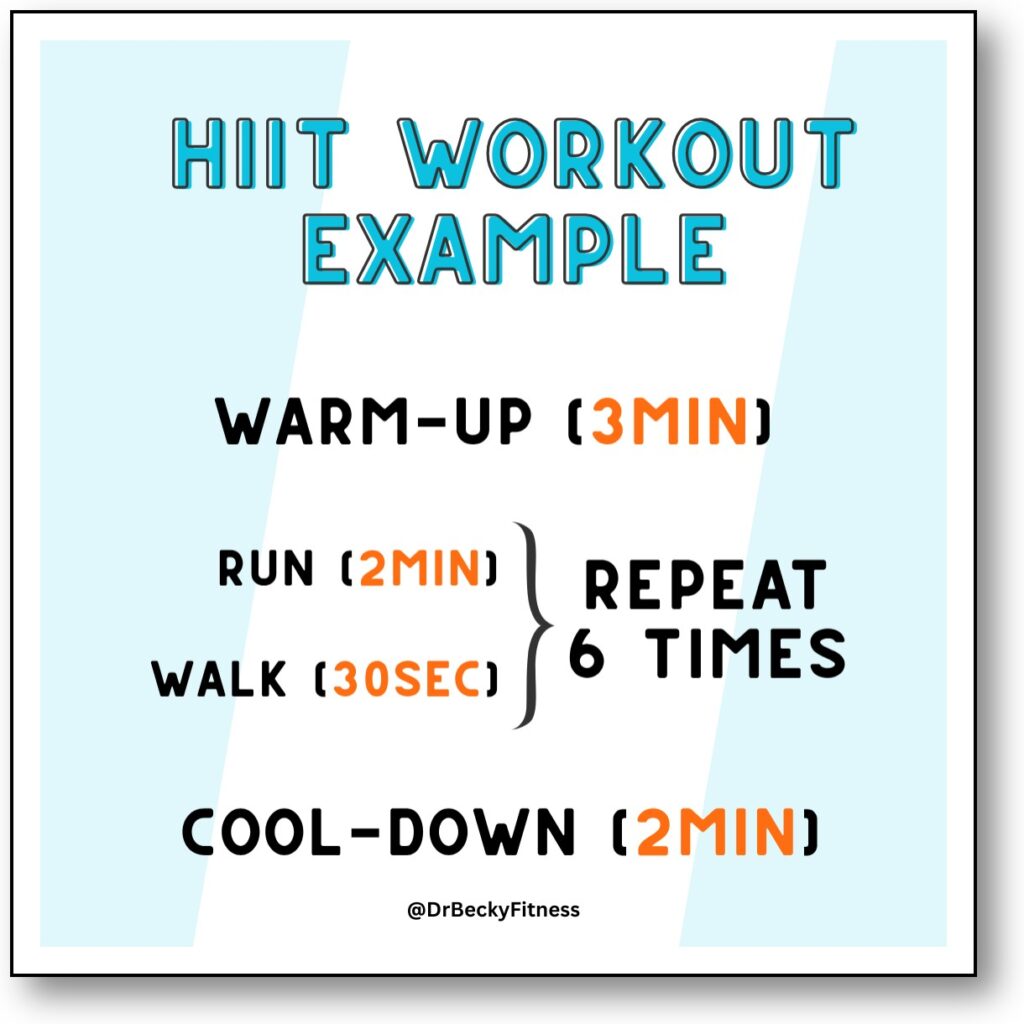
Steady-State Cardio
If you don’t want to do intense exercise, steady-state cardio at a moderate pace will also work, but you’ll have to spend more time doing it.
The study I highlighted earlier, which discussed 20-minute HIIT workouts, also looked at 45-minute moderate-intensity cardio workouts. They found that even though the pace was slower, the participants had similar improvements in insulin sensitivity after each exercise session (3).
Walking briskly, jogging, hiking, and cycling are popular steady-state exercises. But any activity that gets your heart rate up and that you can maintain for an extended period can work.
The only caveat to performing steady-state cardio for insulin sensitivity is that you need to put in the time. How much time? That will vary from person to person and by your speed but consider aiming for 150 minutes per week of walking at a moderate pace.
You can gauge a “moderate pace” by noticing your breathing. If you can speak but feel like you have to take a breath every few words, you are likely in the moderate range.
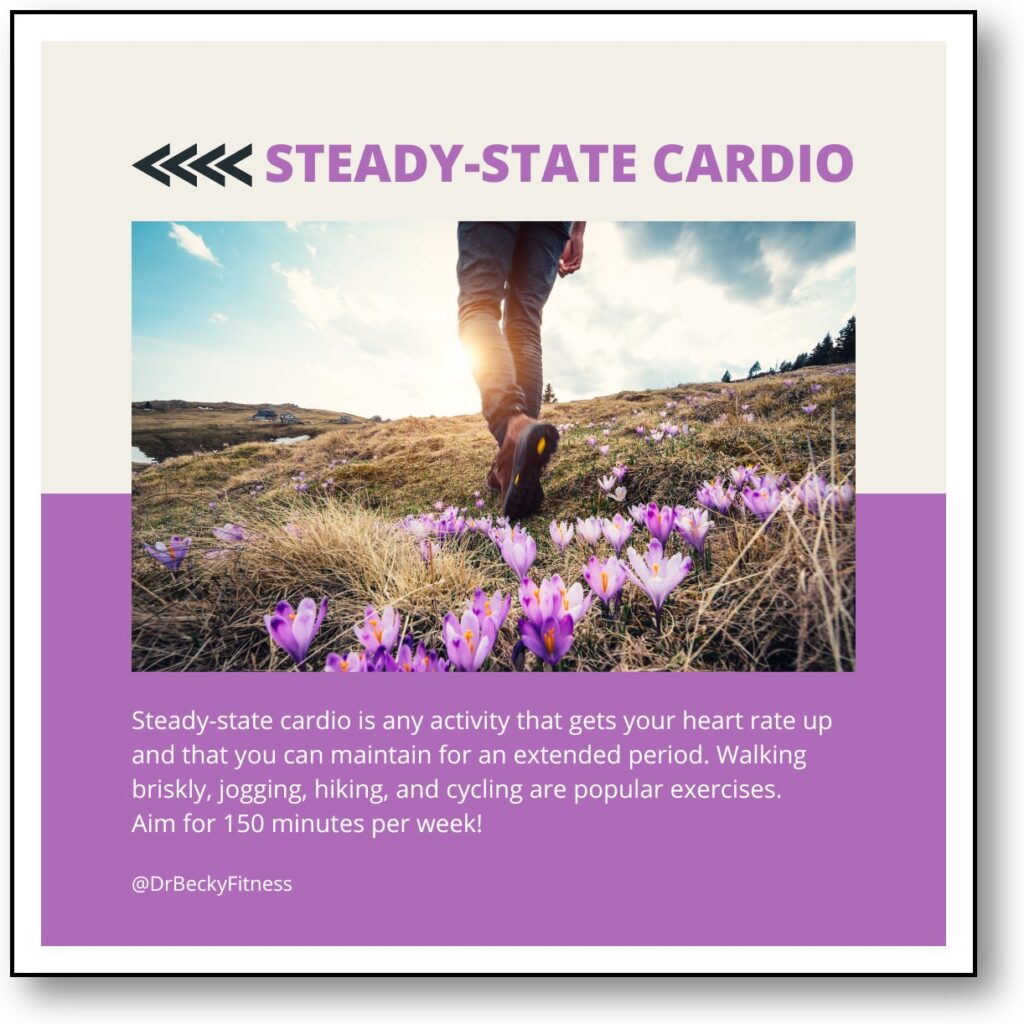
A study published at the end of 2024 found that 150 minutes per week was the time commitment needed to achieve common health goals like reductions in waist circumference and body fat. While the study did not focus on insulin, improving these metrics improves insulin sensitivity (4).
You can break up those 150 minutes any way you’d like, and you can add to them for even better results. If time is a factor, do 25 minutes of moderately intense exercise six times a week. If you have time, do 60-minute walks three or more times a week.
As I mentioned, exercise performed at a moderate pace improves insulin sensitivity by increasing glucose uptake in muscle cells without requiring high insulin levels. Higher-intensity exercises work a little differently, and we see this with weight lifting.
Resistance Training
Weight lifting and other resistance training exercises can cause a temporary insulin spike. However, this is generally beneficial and not the same as a spike from eating sugar or refined carbs.
After a resistance workout, your muscles undergo a period of recovery and repair. To facilitate this repair, the body may briefly release insulin to help shuttle glucose into muscles. That insulin response is transitory and actually part of the muscle-building or anabolic process, not the process that encourages fat storage. And because more muscle mass is associated with greater insulin sensitivity, regular resistance training is a valuable activity to add to your week.
A paper proposing an exercise program for people with insulin resistance recommends a full-body workout three times a week (5).
If you are a beginner, start with one set of 12-15 reps per exercise for each major muscle group (i.e., chest, back, shoulders, arms, legs, and core). You can move up in sets, weights, and repetitions as your strength improves.
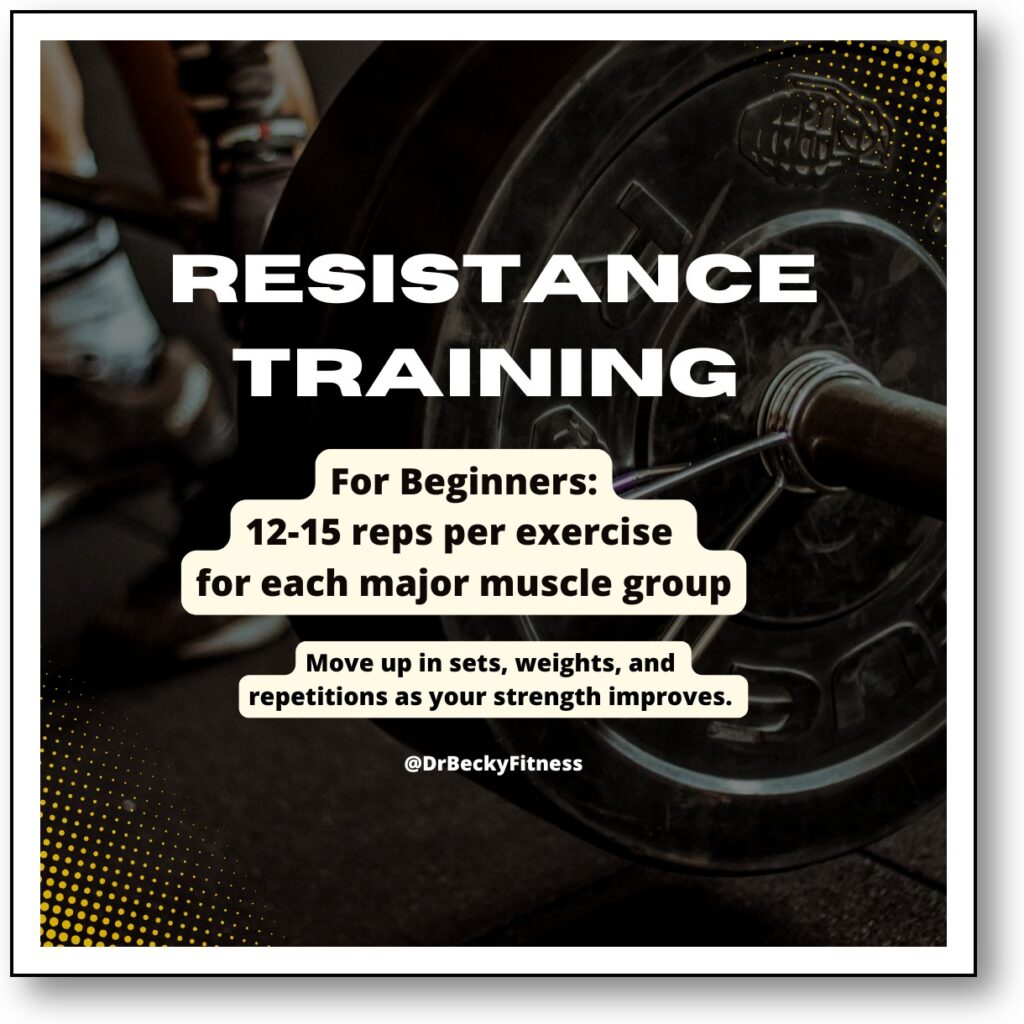
Maximize Your Results
Both resistance training and aerobic exercise are effective for improving insulin sensitivity. Combining them maximizes your results.
When you schedule your exercise week, consider alternating between three days of resistance training and three days of HIIT workouts, or combine three days of resistance training with 150 minutes of steady-state cardio.
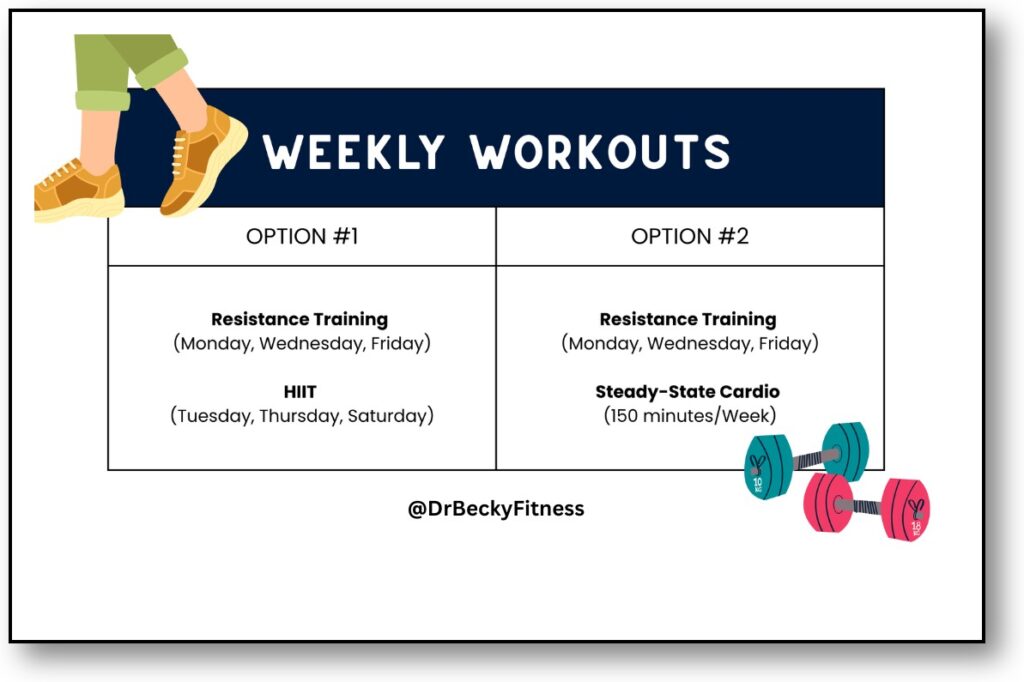
Takeaway
The more insulin sensitive you are, the less insulin your body needs to manage blood sugar levels. That is something you want because it lowers your risk of developing insulin resistance, which can lead to type 2 diabetes, weight gain, and other metabolic disorders.
You can fit exercise into your schedule. Even exercise snacks that only require 30 seconds of your time can lower post-meal blood sugar and insulin spikes, moving your body toward better insulin sensitivity.
References:
(1) Rafiei, Hossein, et al. “Metabolic Effect of Breaking Up Prolonged Sitting with Stair Climbing Exercise Snacks.” Medicine and science in sports and exercise 53.1 (2021): 150-158.
(2) Diabetologia. “Short bursts of intense exercise before meals control blood sugar better than 1 continuous 30 minute session.” ScienceDaily. ScienceDaily, 8 May 2014. <www.sciencedaily.com/releases/2014/05/140508192458.htm>.
(3) Ryan, Benjamin J., et al. “Moderate-intensity exercise and high-intensity interval training affect insulin sensitivity similarly in obese adults.” The Journal of Clinical Endocrinology & Metabolism 105.8 (2020): e2941-e2959.
(4) Jayedi, Ahmad, et al. “Aerobic Exercise and Weight Loss in Adults: A Systematic Review and Dose-Response Meta-Analysis.” JAMA Network Open 7.12 (2024): e2452185-e2452185.
(5) Bollinger, Lance, and Tom LaFontaine. “Exercise programming for insulin resistance.” Strength & Conditioning Journal 33.5 (2011): 44-47.
About the Author
Becky Gillaspy, DC, is the author of The Intermittent Fasting Guide and Cookbook and Zero Sugar / One Month. She graduated Summa Cum Laude with research honors from Palmer College of Chiropractic in 1991.



